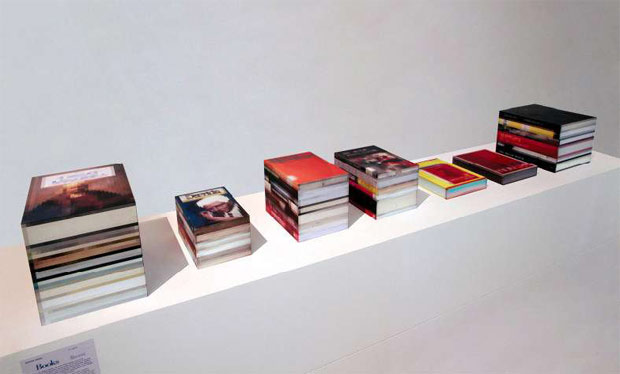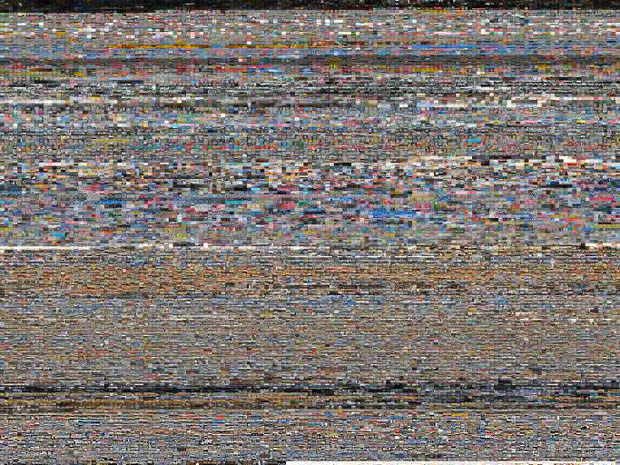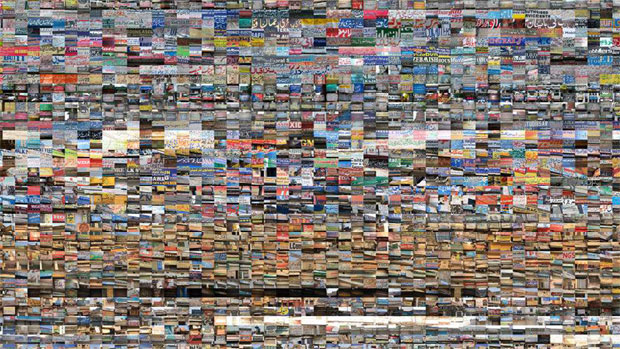Rashid Rana
Things are not as they appear in this Pakistani artist’s pixelated works


Working across mediums—sculpture, video installation and large-scale photography among them—Pakistani artist Rashid Rana explores the singular issue of South Asia’s struggle between tradition and modernity. Typically he uses a pixelated aesthetic to express how globalization and the media impact the region’s identity.
This approach separates out and reassigns associations between the part and whole as a way of challenging stereotypes. His work—on view at London’s Lisson Gallery—teeters between 2D and 3D perspectives, creating tension and forcing his audience to question reality while underlining his position that “we live in a state of duality.”

Rana’s series of sculptures, aptly called “Books,” are really aluminum cubes printed with pixelated photographs, putting the perceptions of three-dimensional space and form into play by toying with our sense of concrete information.

Described by Rana as “unpacked abstraction,” his large-scale photographic work looks like a chaotic field of geometric shapes from afar. As you focus closer, the pixels reveal themselves as smaller, context-specific images disrupting the serenity of the work as a whole with their sheer volume.

Rashid Rana’s show will be at Lisson Gallery from 30 March 2011 through 30 April 2011, and is accompanied by a new monograph on the artist.












